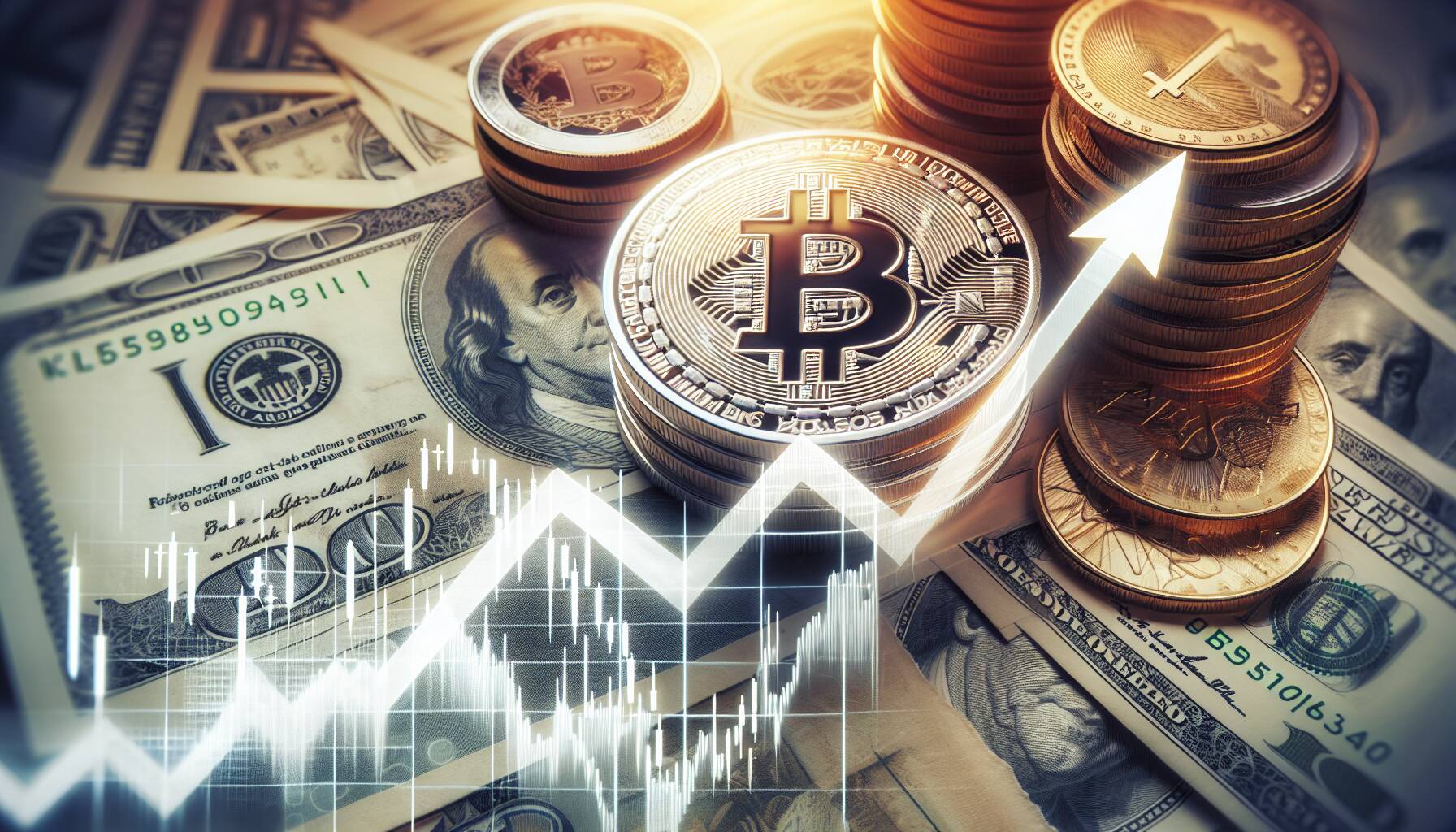Bitcoin (BTC) has seen a slight uptick of around 1.4% in the past 24 hours as investors keep a close watch on upcoming inflation data in the U.S. This critical information, expected later today, may significantly influence discussions around a potential interest-rate cut by the Federal Reserve. In parallel, the European Central Bank is set to announce its own interest-rate decision, with analysts predicting a steady rate—any deviation from this expectation could unsettle the markets.
The anticipation builds as economists forecast a modest rise in the U.S. Consumer Price Index (CPI), releasing at 8:30 a.m. The recent revision of nearly 1 million jobs added by the Bureau of Labor Statistics earlier this week has increased expectations for rate cuts. As a result, betting platforms like Polymarket are reflecting a 79% chance of a 25 basis-point rate cut this month, which traders have also positioned themselves for according to the CME’s FedWatch tool.
In the broader context, the cryptocurrency market has been experiencing notable activity, with spot bitcoin and ether ETFs attracting impressive net inflows totaling $928 million recently. Notably, bitcoin has reached a price of $114,000, a level not seen since early August.
However, caution persists among analysts. Jake Ostrovskis from Wintermute has indicated that ongoing inflation and sluggish growth are raising concerns about stagflation—an economic environment characterized by stagnant growth and high inflation. Flows of capital between assets have also indicated a shift, with investors moving from ether back into bitcoin, as reflected in recent options activity.
Meanwhile, geopolitical tensions simmer, notably with Russia’s recent violations of Poland’s airspace, heightening concerns of a potential conflict and drawing attention from NATO. While Polish officials assert that we are not on the brink of war, the situation remains tense, and its implications for global markets could be profound.
“If history rhymes, bitcoin could be in the process of establishing another bottom, setting the stage for the next major leg higher,” analysts at QCP Capital have noted, indicating a potentially pivotal moment for cryptocurrency investors.

Bitcoin Market Update and Economic Insights
Key points related to Bitcoin (BTC) and broader economic indicators:
- Bitcoin Price Movement:
- Bitcoin (BTC) is up approximately 1.4% in the last 24 hours.
- Achieved a price of $114,000, a milestone since early August.
- Inflation Data Context:
- U.S. Consumer Price Index (CPI) set to be released, expected to rise modestly.
- Potential implications for interest rate cuts by the Federal Reserve, shaping investment sentiment.
- Interest Rate Speculations:
- 79% chance of a 25 basis-point rate cut this month as per Polymarket.
- 8% chance projected for a deeper cut of 50 basis points.
- Market Response:
- Spot Bitcoin and ether ETFs saw nearly $1 billion in net inflows yesterday.
- The shifting odds for rate cuts are positively impacting market assets.
- Cautious Market Sentiment:
- Some analysts express concerns over potential stagflation due to persistent inflation.
- Shifts in investment preferences from ether back to Bitcoin noted.
- Geopolitical Tensions:
- Russia’s airspace violation over Poland raises concerns, highlighting the risks of geopolitical conflicts.
- Market sentiments remain sensitive to international tensions affecting economic stability.
- Upcoming Economic Events:
- U.S. Core CPI report scheduled, along with various token listings and governance votes in the crypto space.
- Anticipated developments in the broader economic landscape may influence investment opportunities.
“In times of economic uncertainty, investors often seek refuge in stable assets like Bitcoin and gold.”
Bitcoin and Interest Rates: A Critical Junction in the Crypto Market
Recent developments in the cryptocurrency landscape have been significantly influenced by macroeconomic factors, particularly concerning interest rates. Bitcoin (BTC) has seen a modest uptick of around 1.4%, as investors remain attentive to forthcoming inflation data from the U.S. This data release is pivotal as it may sway the Federal Reserve towards implementing interest rate cuts, a scenario that typically boosts risk assets, including cryptocurrencies. In contrast, the European Central Bank (ECB) is anticipated to maintain steady rates, raising the prospect of a surprising deviation that could disrupt financial markets.
Comparative Advantages: Bitcoin’s positioning appears advantageous amid economic uncertainty, especially with increased capital inflow from ETFs. Investors are channeling substantial resources into crypto, totaling $928 million from spot bitcoin and ether ETFs. This illustrates a strong market interest, further bolstered by the projected cuts in U.S. interest rates, which could enhance Bitcoin’s appeal against traditional assets like gold, especially considering analysts note it may be establishing a bottom that precedes significant price increases.
On the flip side, the potential for an ECB surprise could introduce volatility in European markets, creating a chance for Bitcoin and other cryptocurrencies to gain ground over fiat currencies. Additionally, a spike in staking returns, as seen with tokens like MNT, indicates that investors are seeking yield-bearing assets, also endorsing cryptocurrencies as viable alternatives.
Competitive Disadvantages: However, cautionary insights from analysts reflect an underlying tension. Concerns over persistent inflation and the specter of stagflation could deter some investors, particularly if Bitcoin fails to outpace the market during an economic downturn. Traders have exhibited a shift towards protective strategies, particularly moving away from ether as Bitcoin regains favor, suggesting a cautious sentiment surrounding altcoins’ long-term viability in a shaky market. Moreover, the geopolitical landscape, marked by tensions like the recent airspace violations by Russia, could prompt risk aversion, adversely affecting crypto investments.
This nuanced backdrop means that while crypto enthusiasts may find opportunities, traditional investors and those reliant on stable economic conditions could face troubles if volatility undermines market confidence. Moreover, the shifting dynamics of investment preferences—from major cryptocurrencies to more speculative assets like MNT—illustrate how quickly the tides can turn, positing a complex environment for both crypto investors and financial institutions.















